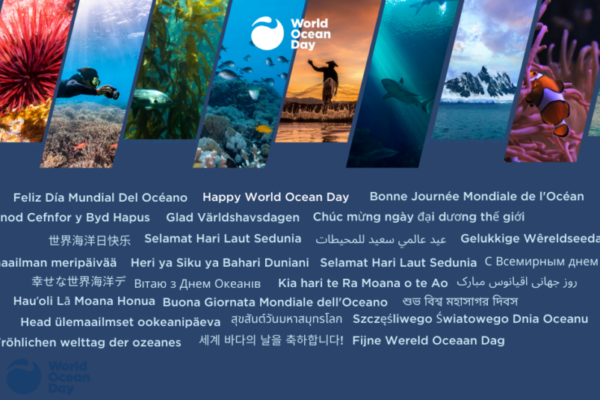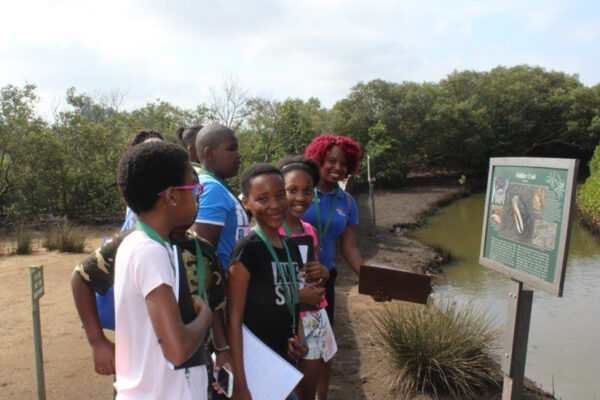Working with youth is incredibly important for the future of environmental protection. Not only has our communications research told us youth of today are the most socially conscious and environmentally aware generation with the most household influence on environmentally responsible actions, another recent study shows “(not) since 1972 has a generation played such a significant role in voter preferences as it has in recent elections”. This is great news for our efforts with zoos, aquariums, and museums (ZAMs) to encourage a youth movement for ocean conservation. They are clearly passionate and do not shy away from taking personal action, whether politically or in their personal lives.
Therefore, the question for us in our efforts to communicate for action is not “How can we make them care enough to act?” but “How do we empower them to take meaningful action for conservation?”
The Ocean Project has been working with a ZAM partners---Seattle Aquarium, North Carolina Aquarium at Fort Fisher, New York Aquarium, Lincoln Park Zoo and Chicago Botanic Garden---on precisely this issue and seeing promising headway. Seattle’s P.S. We Love You campaign has already seen significant success in motivating teen volunteers to take action and inspire their friends and families to action, while NC Fort Fisher’s Beach Reach utilizes social media to “bring beaches back to life, pier to pier and peer to peer”.
Here are some of the lessons we've learned through these campaigns:
Cross-discipline support.
- The first step in planning a campaign is to discuss goals and strategies with the cultural organization’s staff. It is best if a healthy cross-section of staff from different disciplines attends this workshop, even if they will not be heavily involved in campaign activities. This helps to garner buy-in and support from the entire organization. And it does serve to motivate potential future mentors.
Recruit student participants who are already literate on the subject.
- Research shows and personal experience confirms that students who are already knowledgeable on the subject matter will become more involved and at a faster rate. So if you want to do a campaign related to conservation, it absolutely helps if the youth have already learned about conservation issues and lingo. If the students are not yet literate on the subject matter, the cultural organization can get them up to speed before beginning the campaign.
Work with a critical mass of youth participants.
- In order to have a successful campaign, it really helps to have a robust number of youth participants. Having that critical mass keeps the teens motivated and also accounts for the few who will not remain involved in the long-term. There isn’t an exact right number, but certainly more than 10 are needed.
Structure the time and place of campaign work.
- Youth participants will accomplish far more if they work in a moderately structured environment. Dedicated staff and mentors can structure time by setting results to be accomplished at each meeting and helping teens follow through. The youth participants should also be able to meet in a place with enough space and with access to tools for them to accomplish planned results.
Allow students and staff to brainstorm and make decisions.
- Youth campaigns are a two-way street between students and staff, so goals and decisions should be made in tandem. It’s essential for the cultural organization’s staff to discuss institutional mission and goals, but it is equally important for youth participants to follow their interests and determine their campaign. The interests of staff and students always line up, but it’s key that both groups go through the brainstorming and decision process.
Trust them by turning over some control to the youth.
- All partner organizations have found that giving a little control to their youth participants goes a long way. When given room to be open and creative, students have presented great ideas and tried new things, while always remaining true to the cultural organization’s overall message and values.
Appoint a dedicated staff member to champion the campaign.
- Youth campaigns work best when a staff member takes the lead in overseeing the campaign. The role of that staff member is to support the teens, look out for the campaign’s best interests, and help drive buy-in among other staff members. Finally, when the organization is ready for YouthMuse and The Ocean Project to begin to step back from the campaign, the champion helps ensure ongoing success.
Create a schedule for check-ins.
- After YouthMuse and The Ocean Project facilitate the start of a youth campaign, the cultural organization transitions into taking the lead in continuing the project. Periodic check-ins with YM/TOP are a great tool for lasting success, and can be done via email, phone and Skype. In these check-ins, YM/TOP can help cultural organizations meet their ongoing goals, handle any bumps in the road, and offer advice or additional support.
Allow the students to volunteer to participate.
- Don’t make campaign participation part of the students’ program requirements. The students who are motivated to make a difference will get on board and recruit others.
Make it geographically easy to attend.
- Hold some of the meetings at a neutral location (be sensitive that a school may not be a neutral location) closer to the youth, if they can’t get to your facility. If you can, provide transportation support. Hold meetings in conjunction with other activities (volunteer shifts, program efforts) that bring the students to your location anyway.
Keep in touch.
- Try to have at least monthly meetings. Students get distracted and the relationship must be rebuilt if you don’t engage them on a regular basis.
Give service learning hours.
- Or volunteer points or whatever reward system you have in place for student participation in campaign activities. These students work hard on the campaign; show them it’s important.
What have you learned from working with youth?



